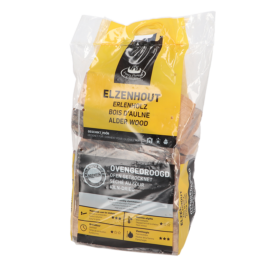Responsible and Safe Fire Building: Essential Tips & Guidelines
Friday, May 19, 2023
The coziness of a crackling wood fire

As the beautiful weather approaches, everyone wants to go outside and enjoy cozy moments in the garden. A warm and cozy fire certainly adds to that, but with all the concerns about unwanted smoke and odour nuisance, it's important to consider a few things. These tips and guidelines will help you responsibly and safely handle fire.
Responsible and safe wood burning
Wood burning is the oldest form of heating that we know of. For thousands of years, people have been warming up and cooking over wood fires. However, nowadays, fire-related nuisance has become a complex problem. Smoke can cause inconvenience. The way you burn wood determines the amount of smoke emitted.
Does this mean we can't burn wood anymore? Of course, we all want to continue enjoying the cozy fireplace, patio heater, or fire pit. That's why today we'll tell you how to burn wood in a sustainable, safe, and proper way, reducing smoke and odour nuisance.
Tips for burning without inconvenience
By burning properly, you can prevent a lot of nuisance. When burning outdoors, the type of fuel used, the burning behaviour, and the type of barbecue/fire bowl used are important. Here are three tips for burning without inconvenience:
- Use only clean and well-dried wood: Damp wood doesn't burn well and produces more harmful substances. Use wood that has been dried for two years or oven-dried wood. Using a moisture meter helps to check the moisture content of the wood.
- Avoid burning treated or painted wood: Burning treated wood is prohibited as it releases many hazardous substances.
- Avoid burning in calm or foggy weather: In calm or foggy weather, smoke tends to linger, causing local air pollution and smoke and odour nuisance.

CO2-neutral burning
To enjoy a crackling fire, it's important to use well-dried wood. But did you know that you can also burn CO2-neutrally? Wood is a renewable energy source. Use gathered or pruned wood from your own garden and burn it in a CO2-neutral way, as trees absorb as much CO2 during growth as is released during combustion.






















